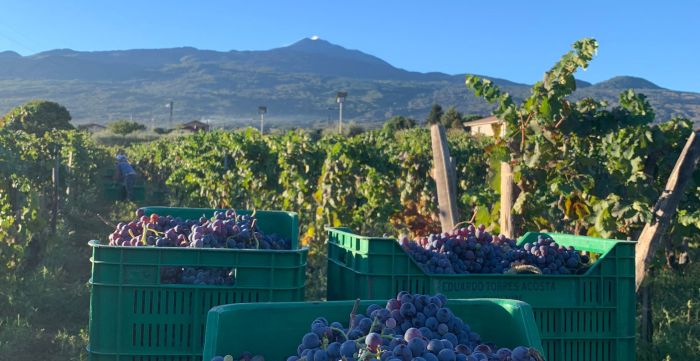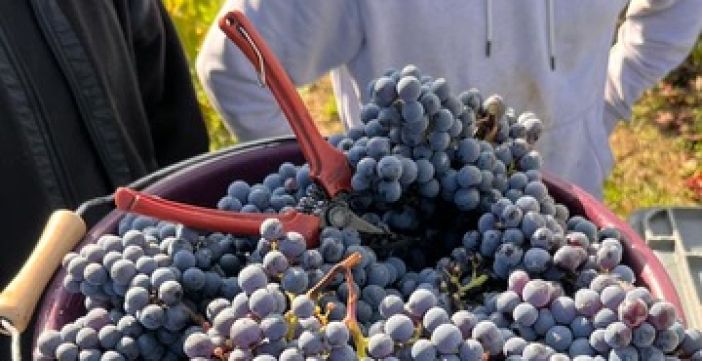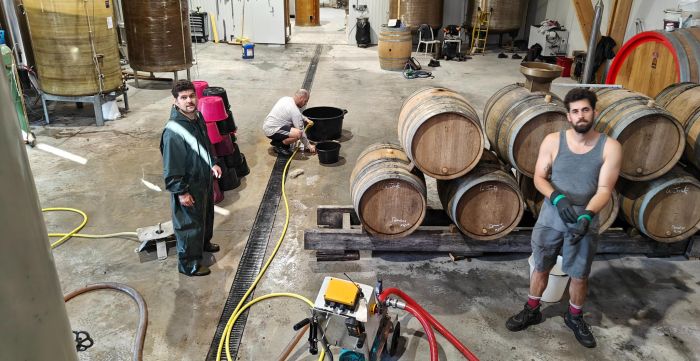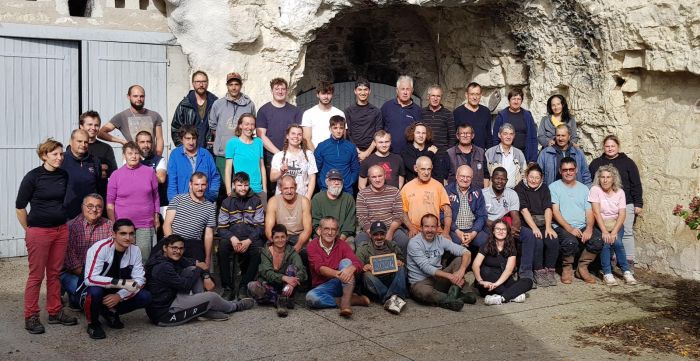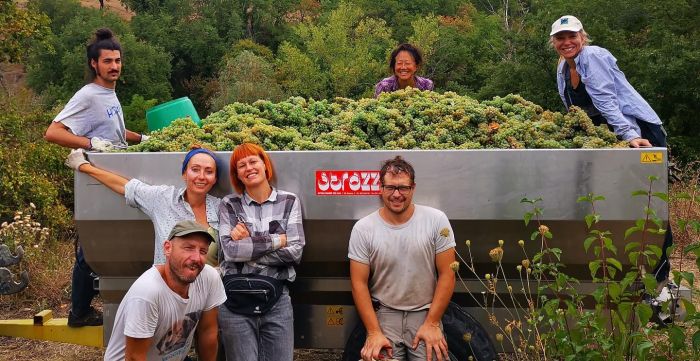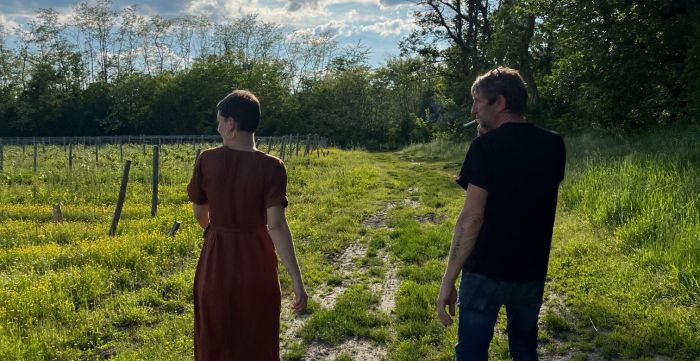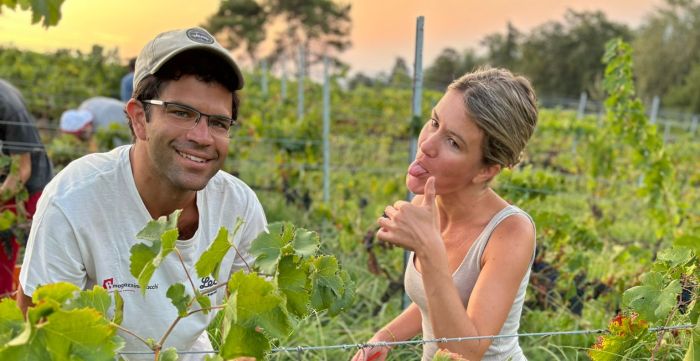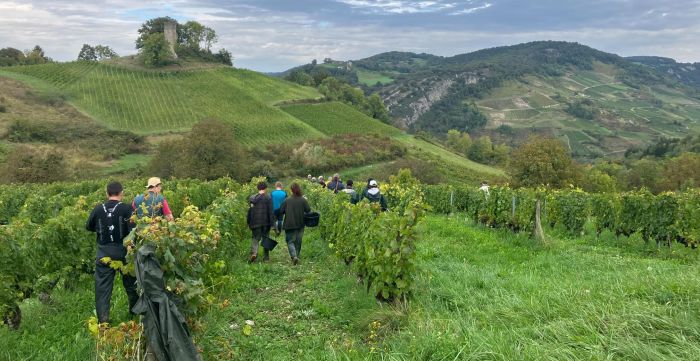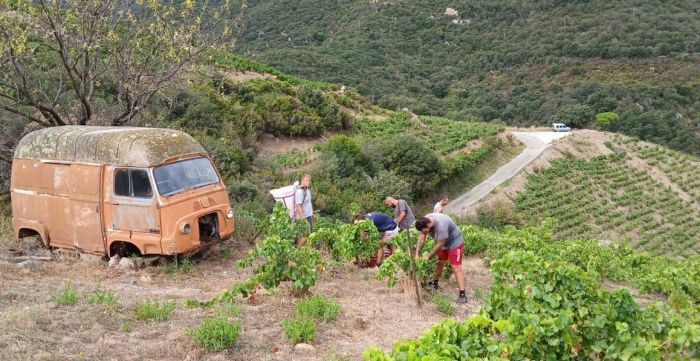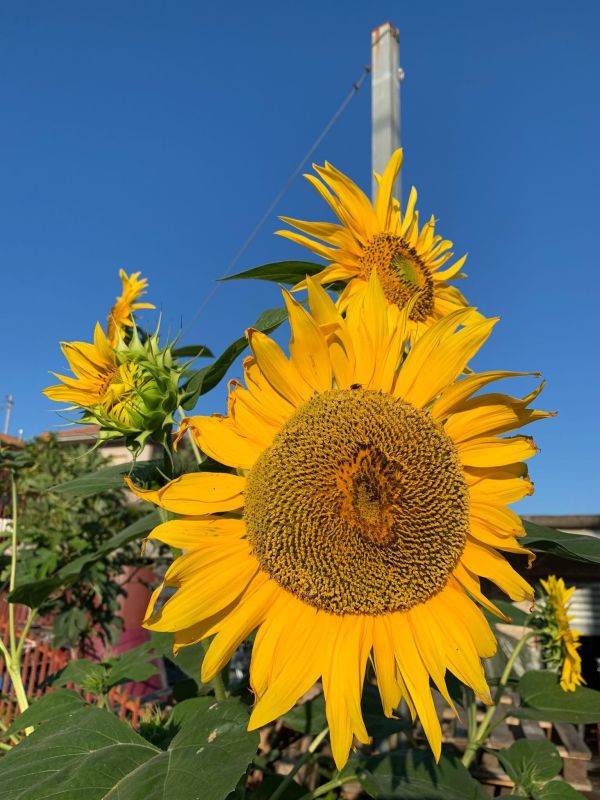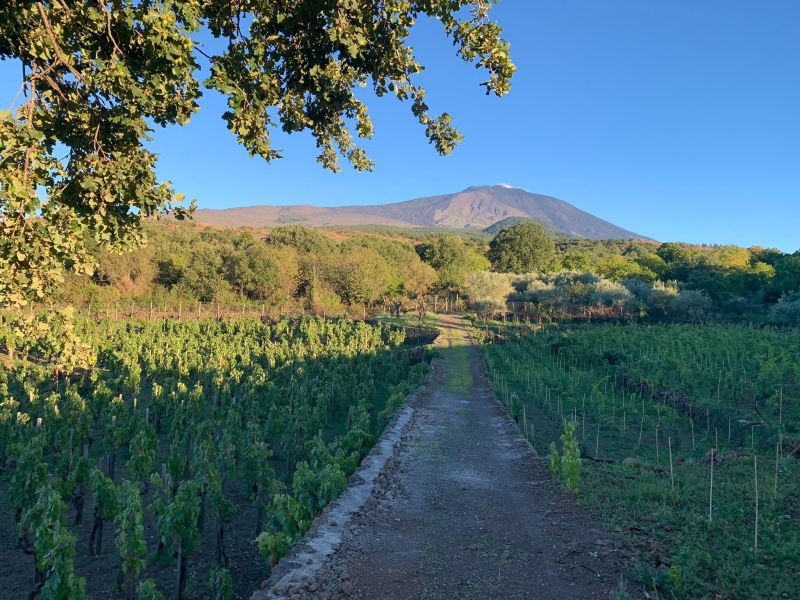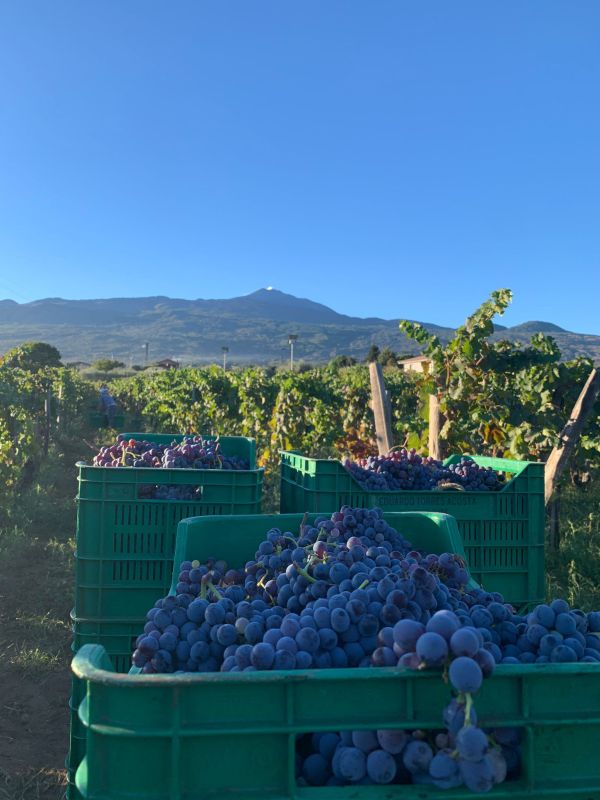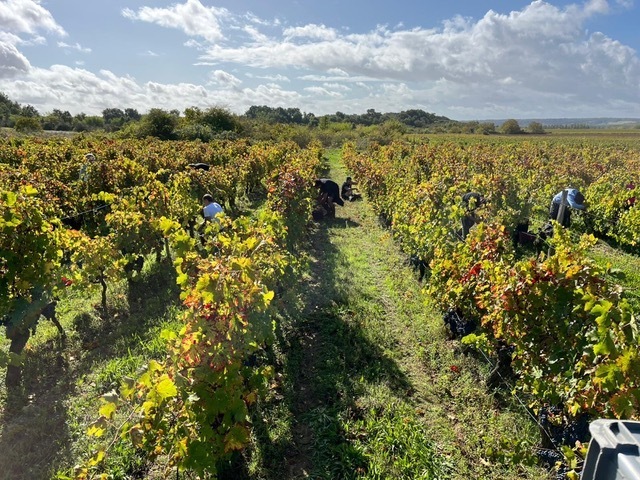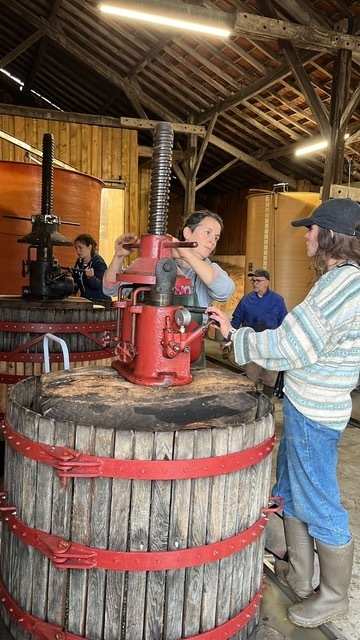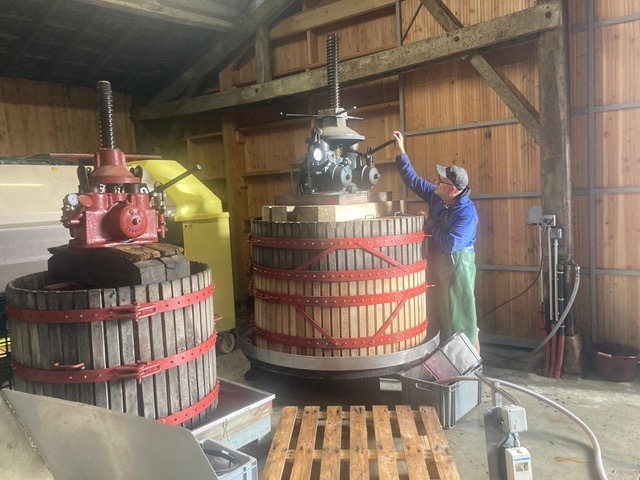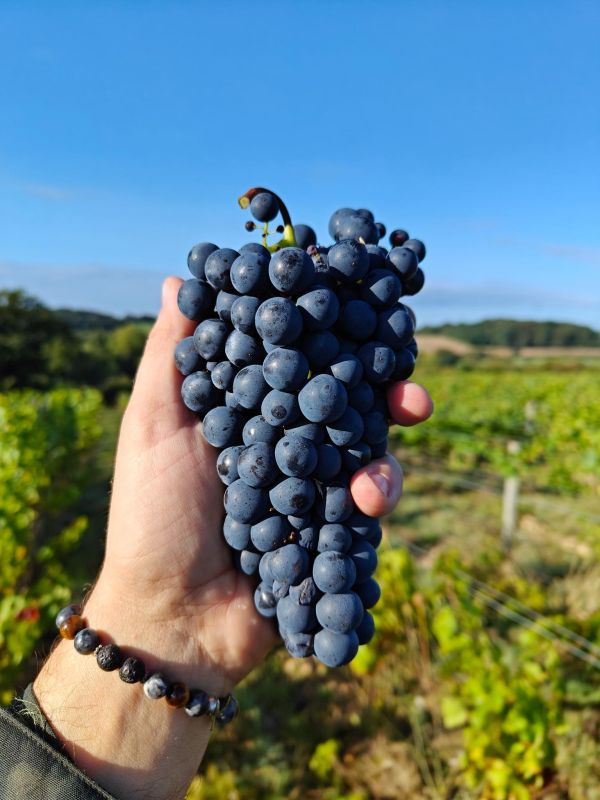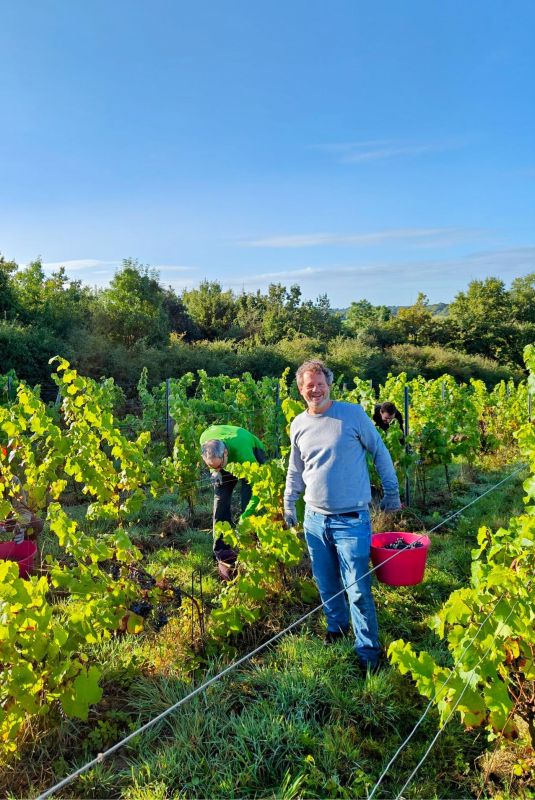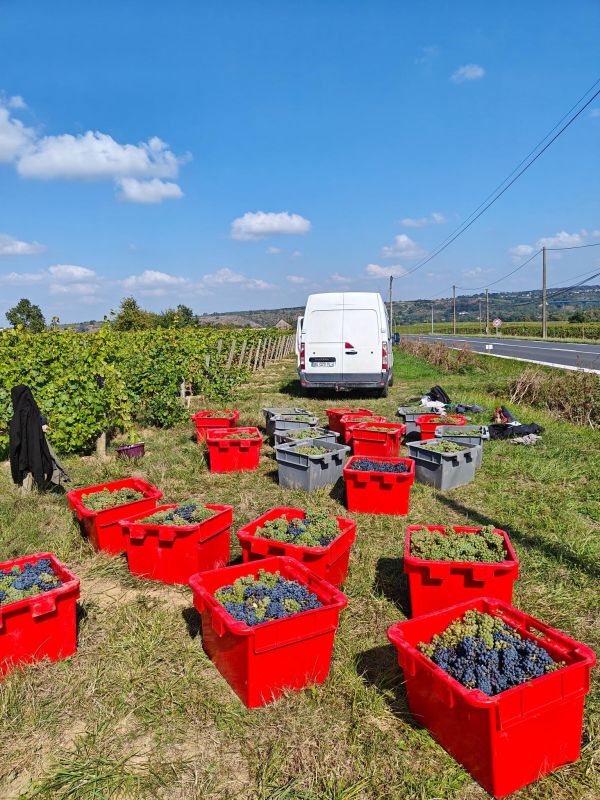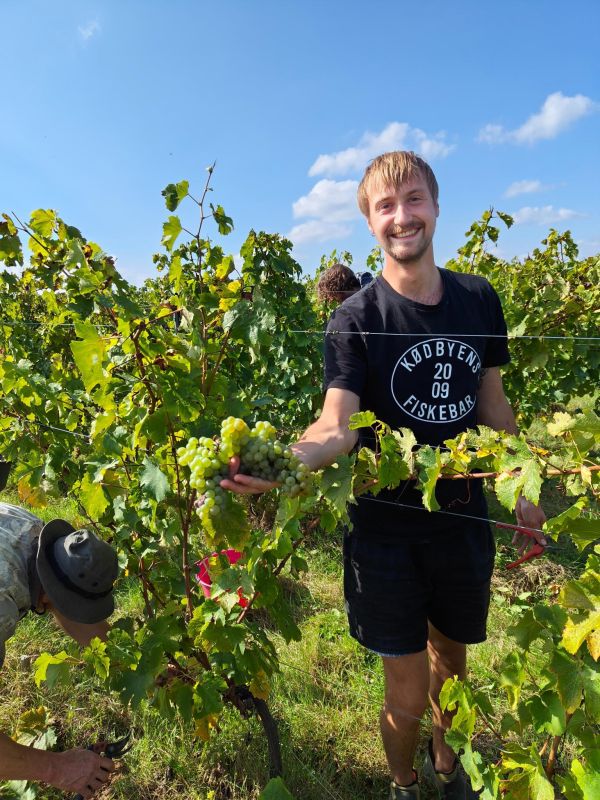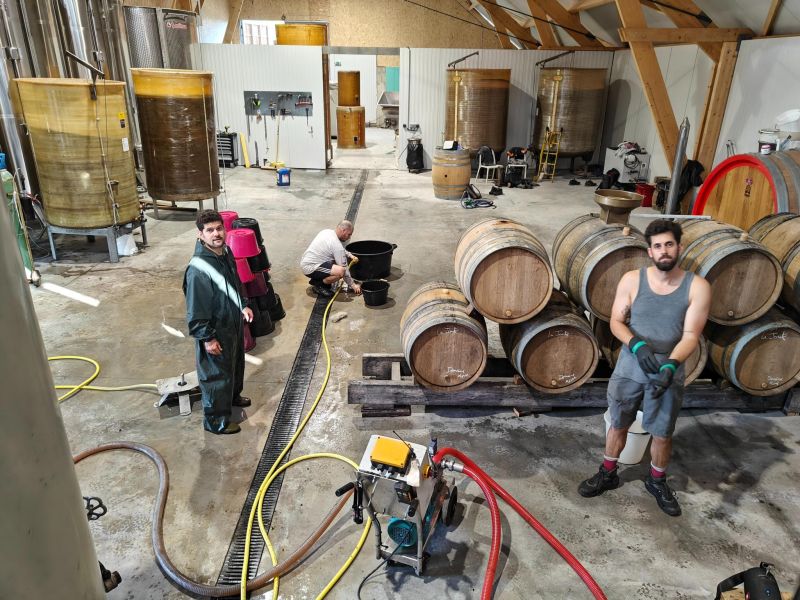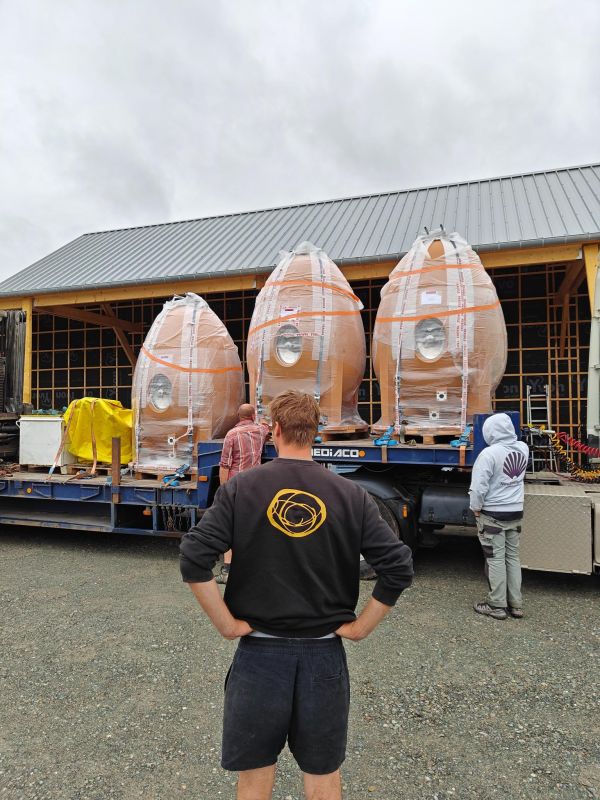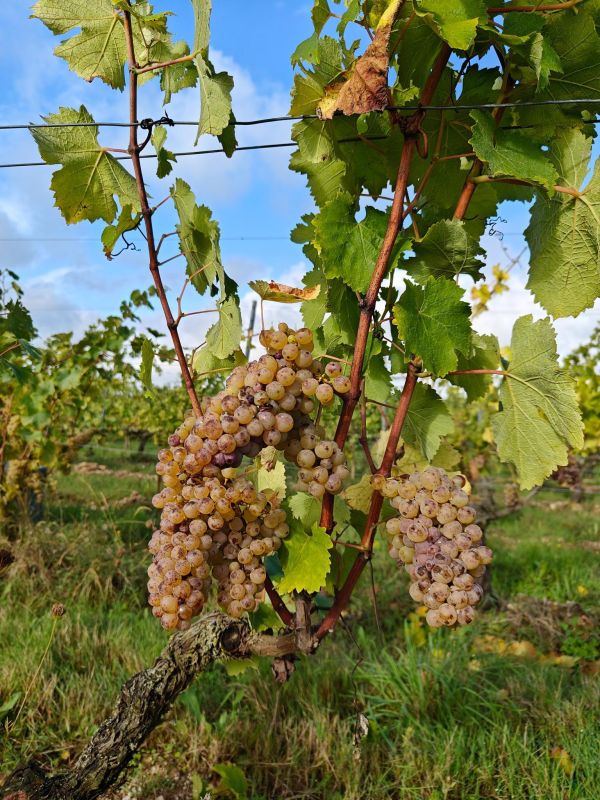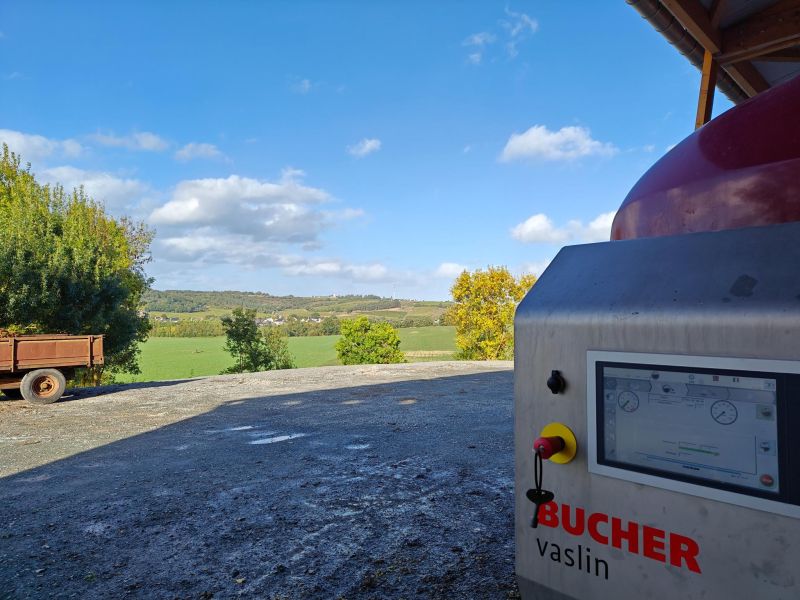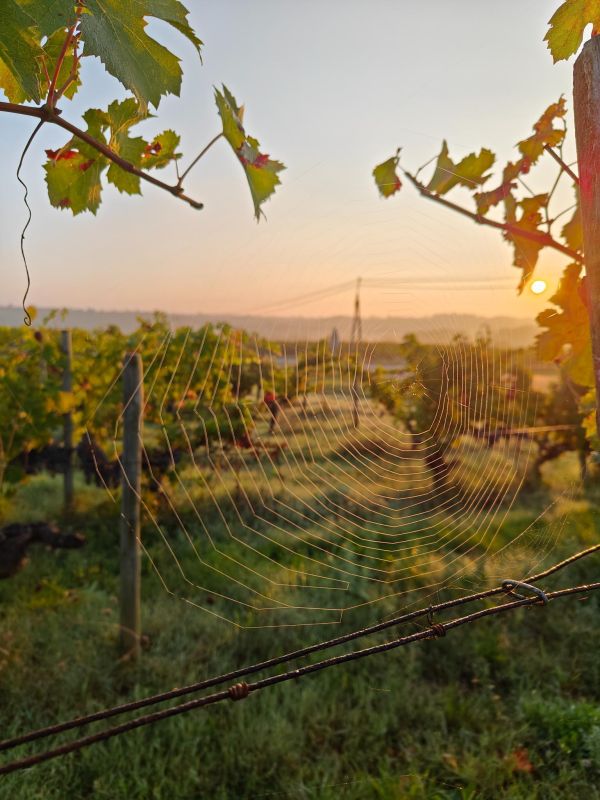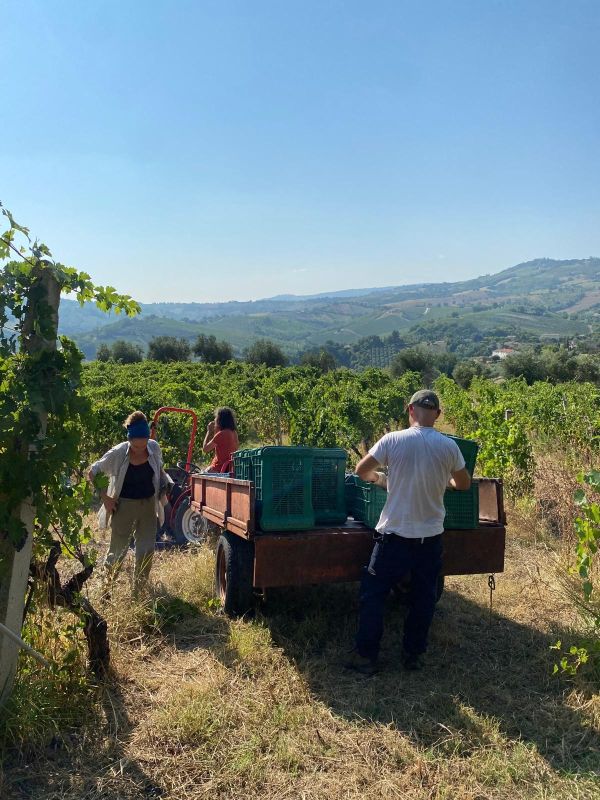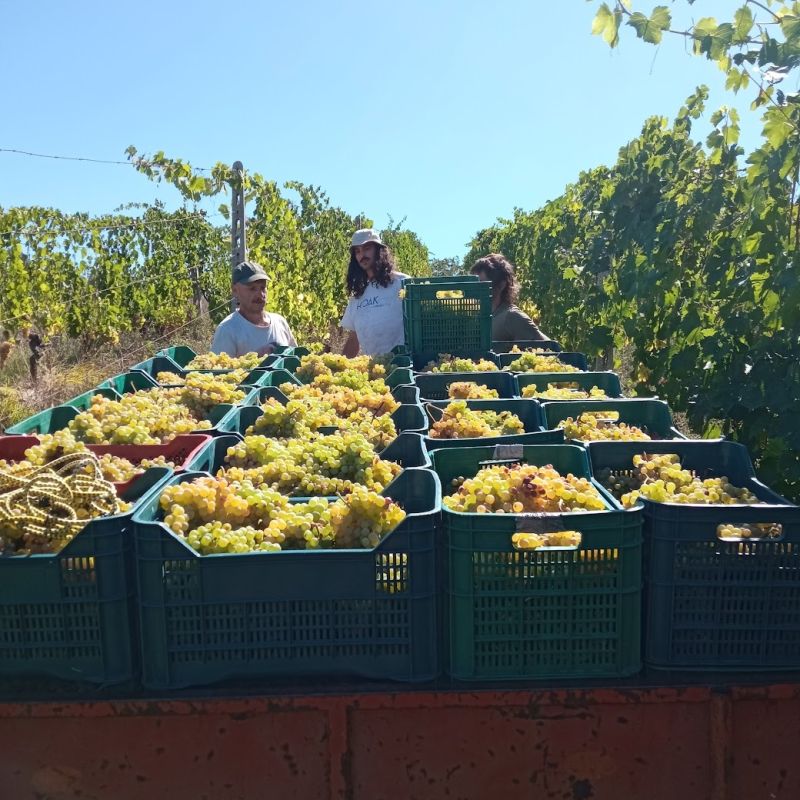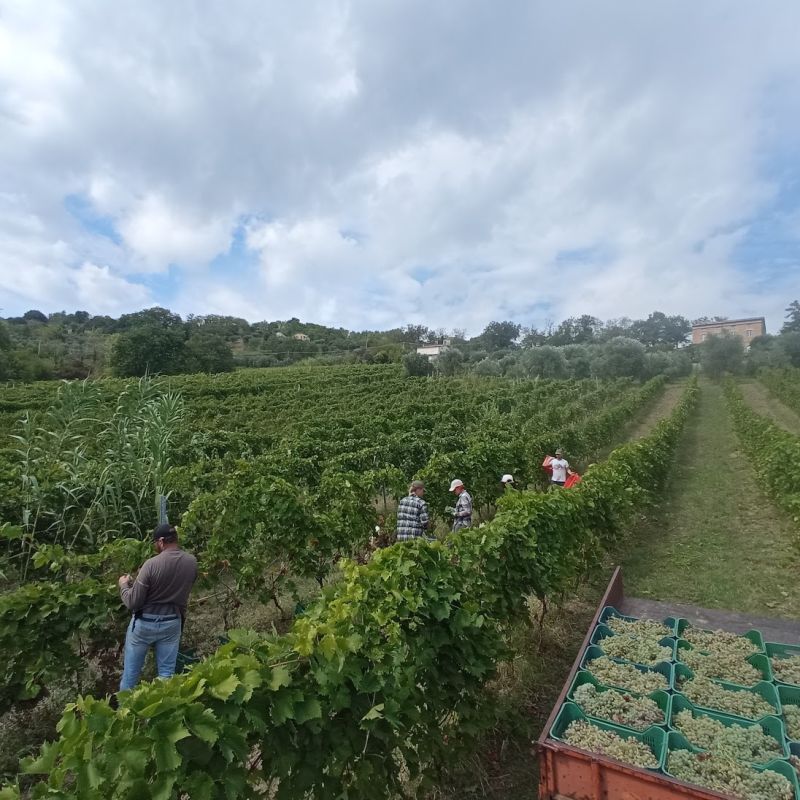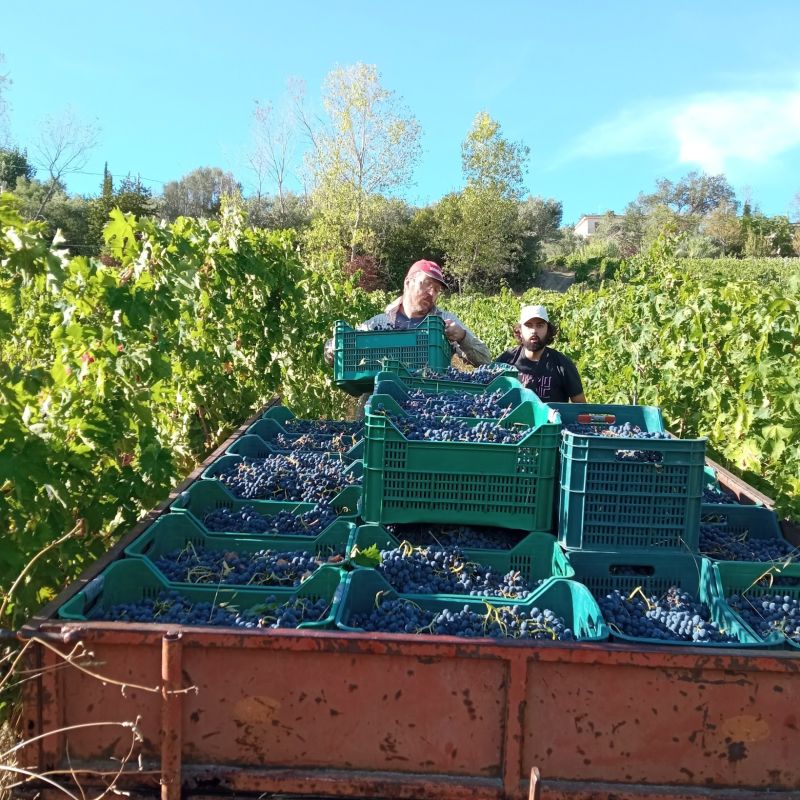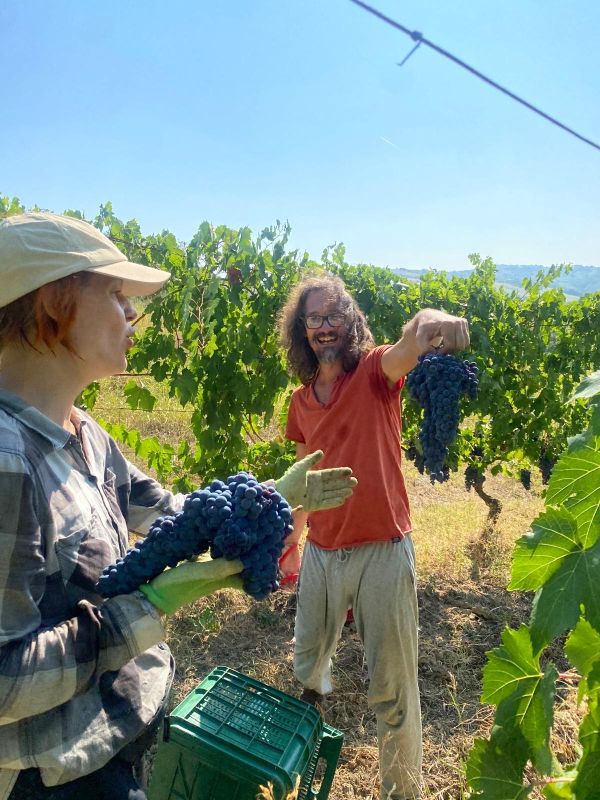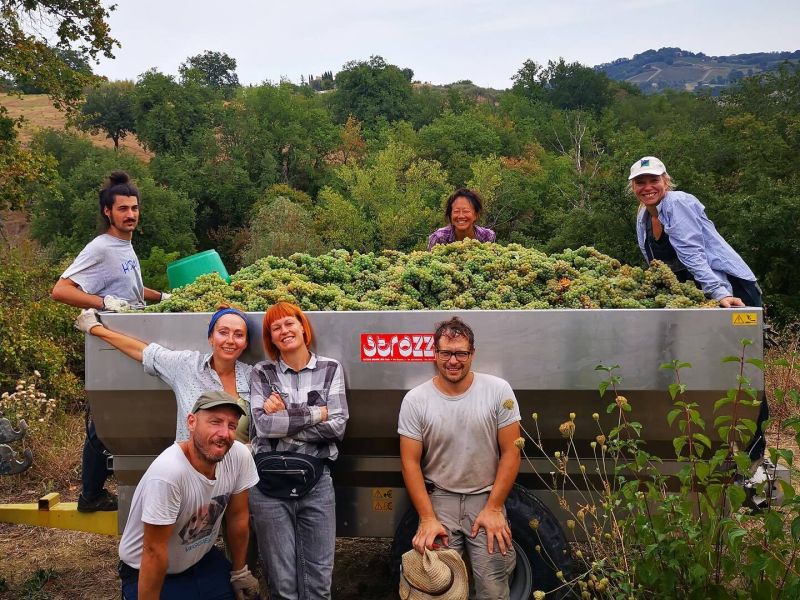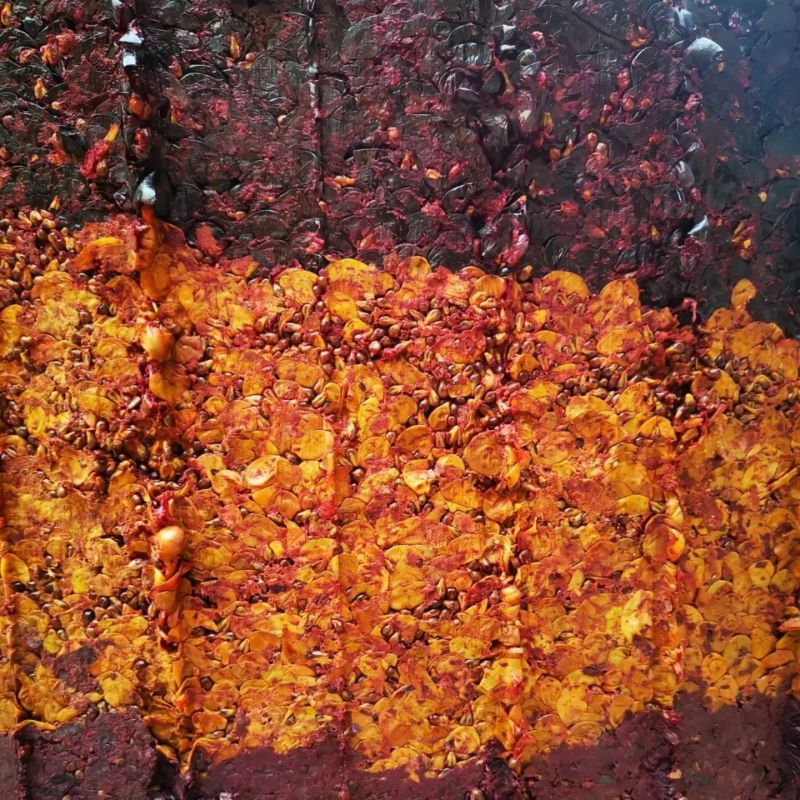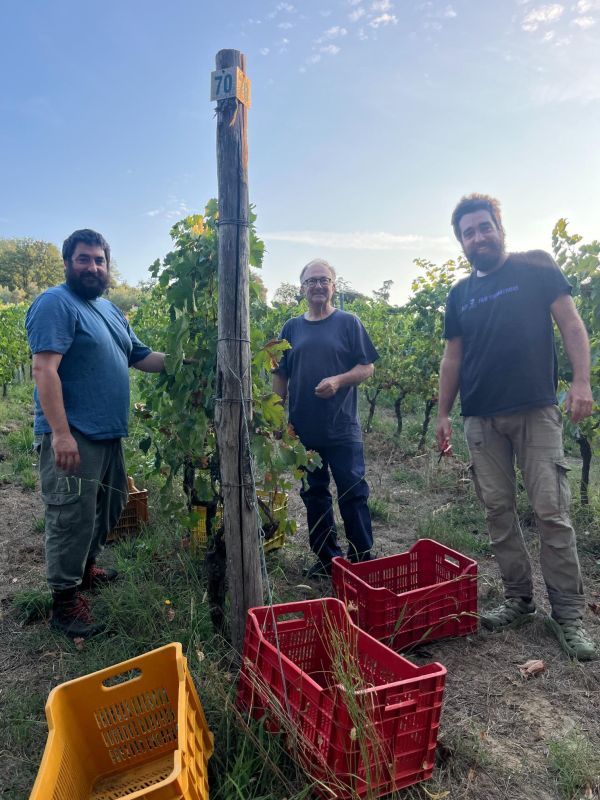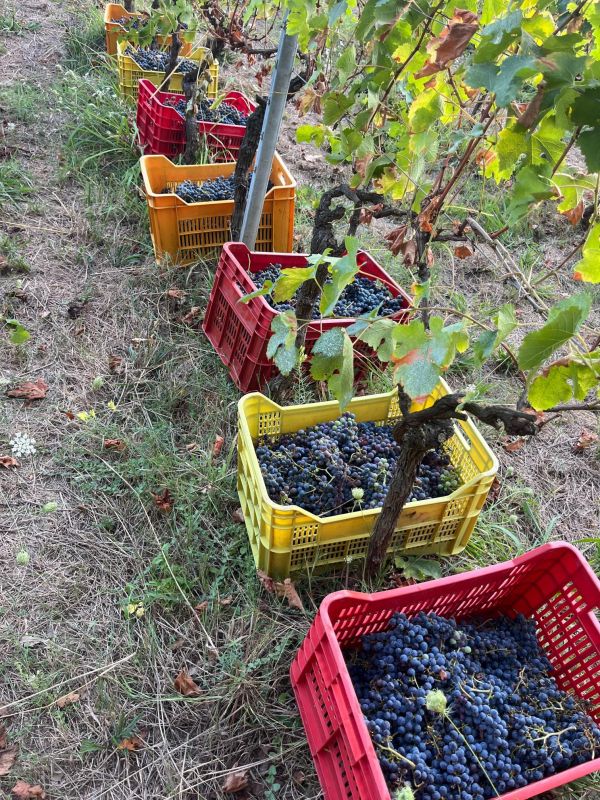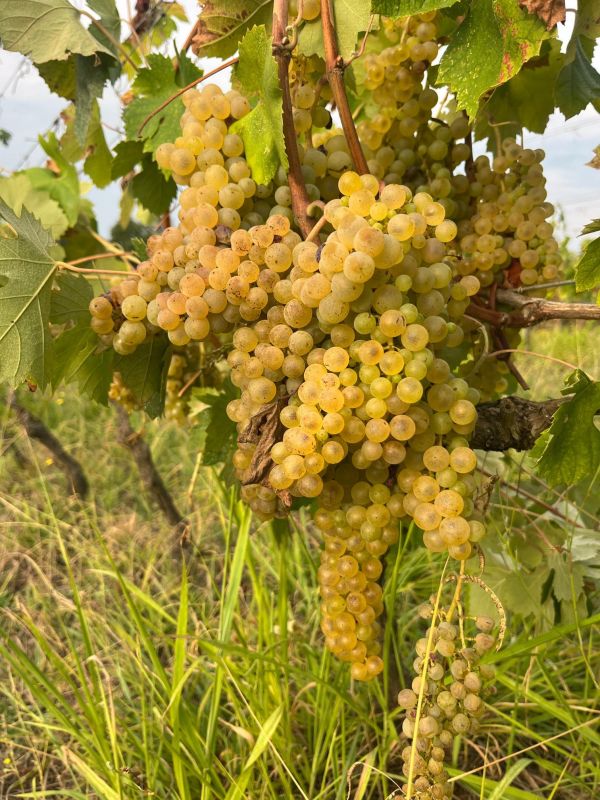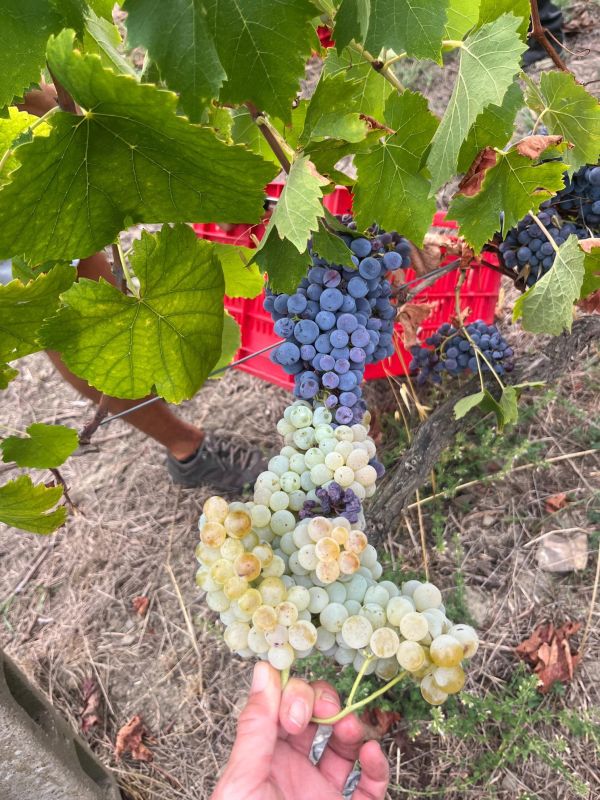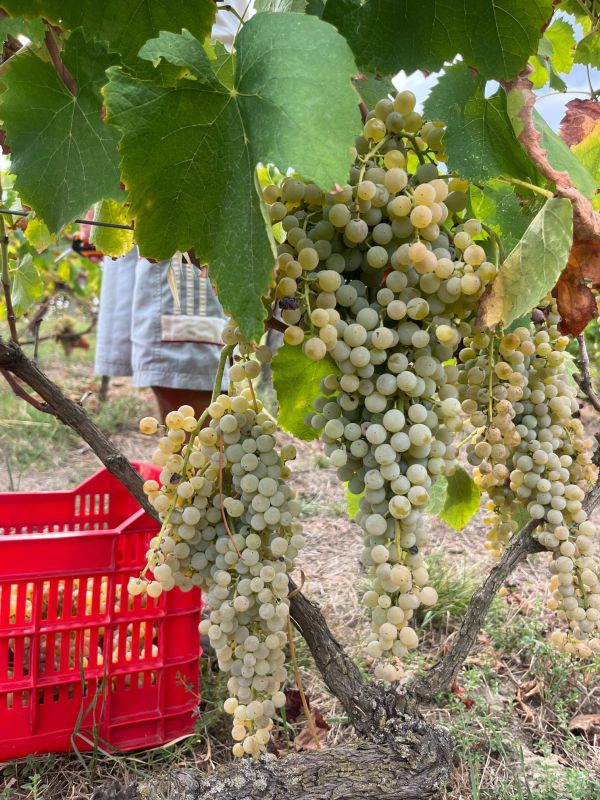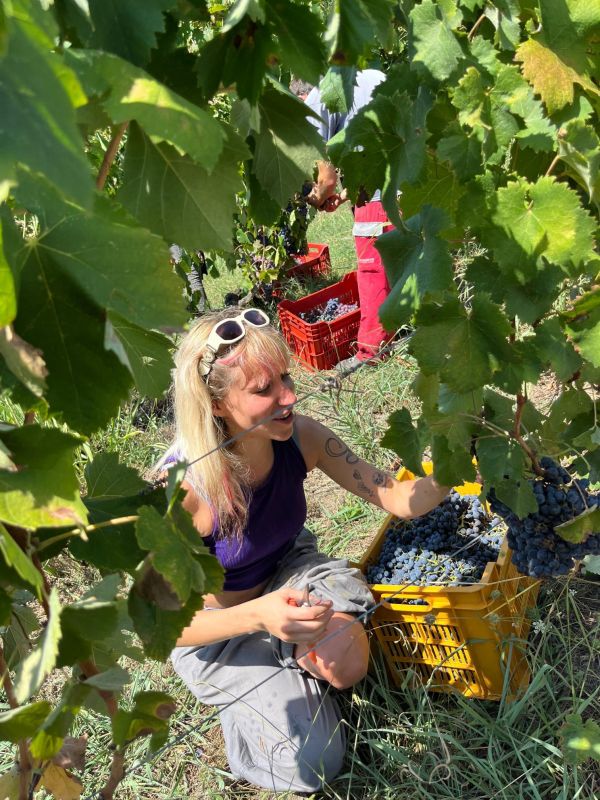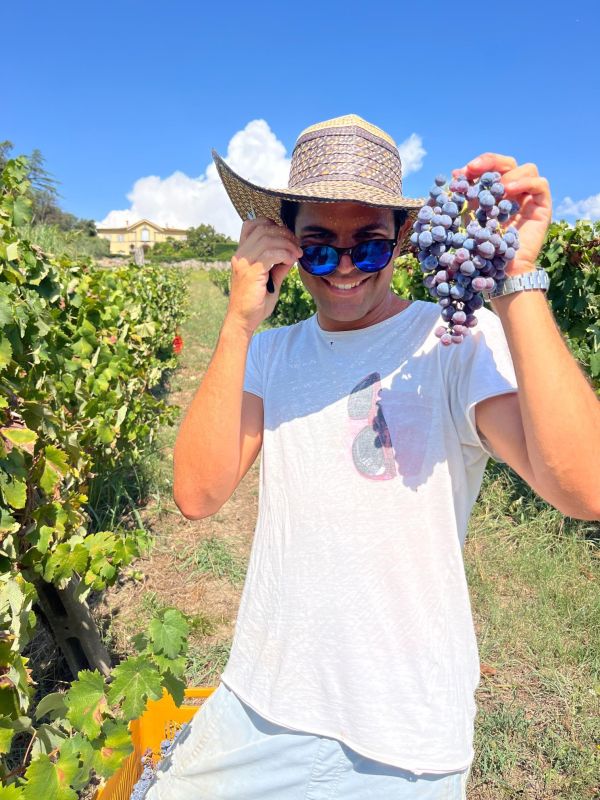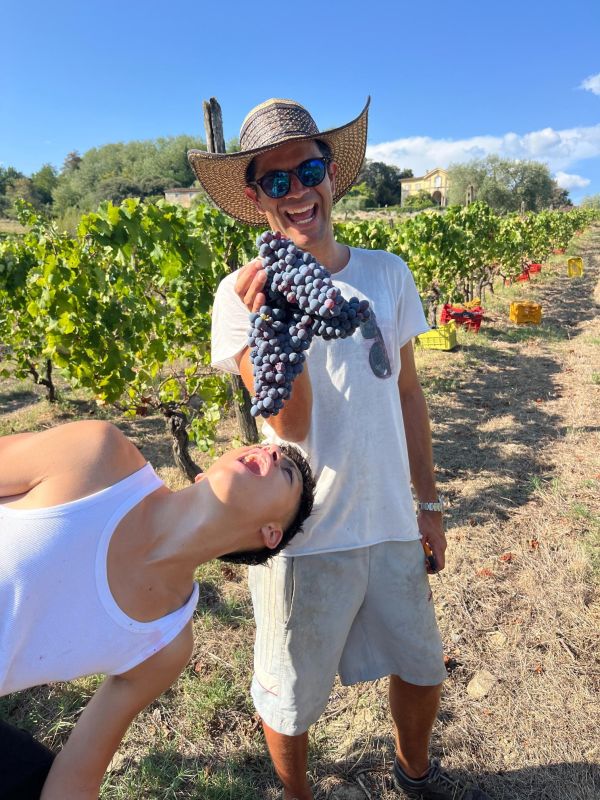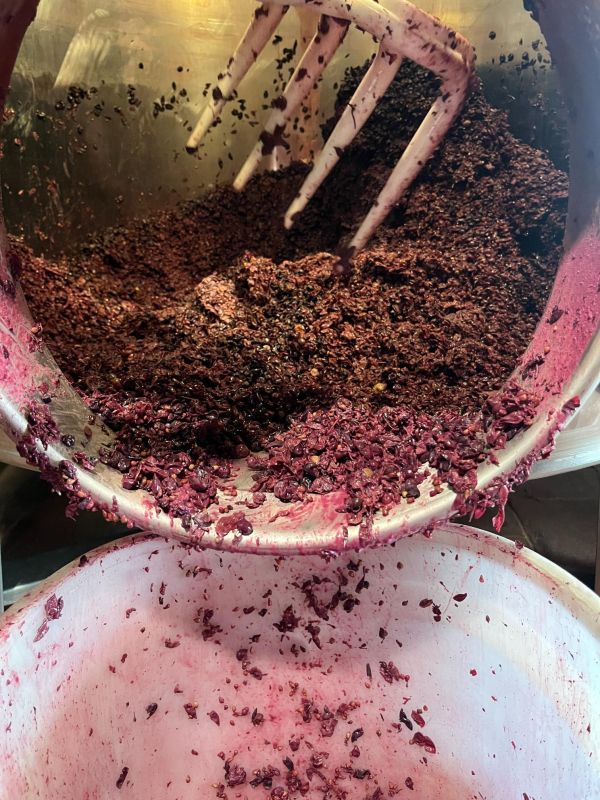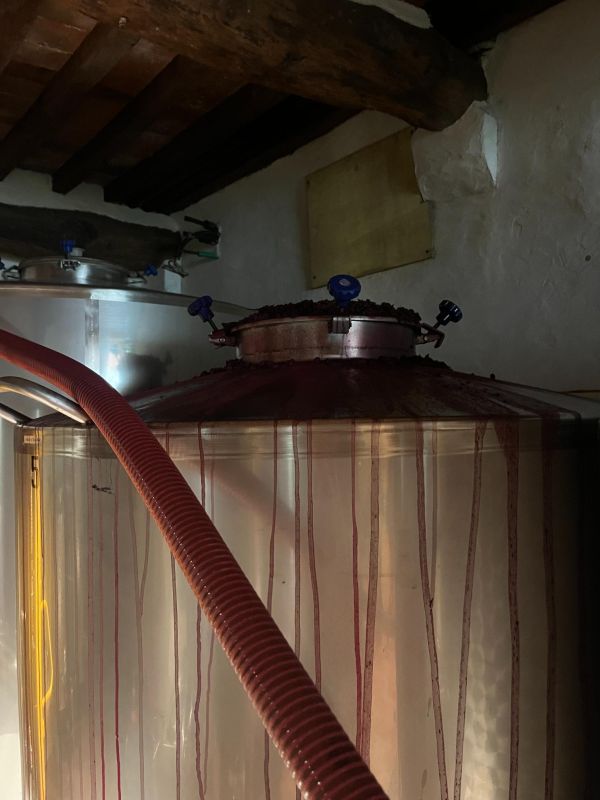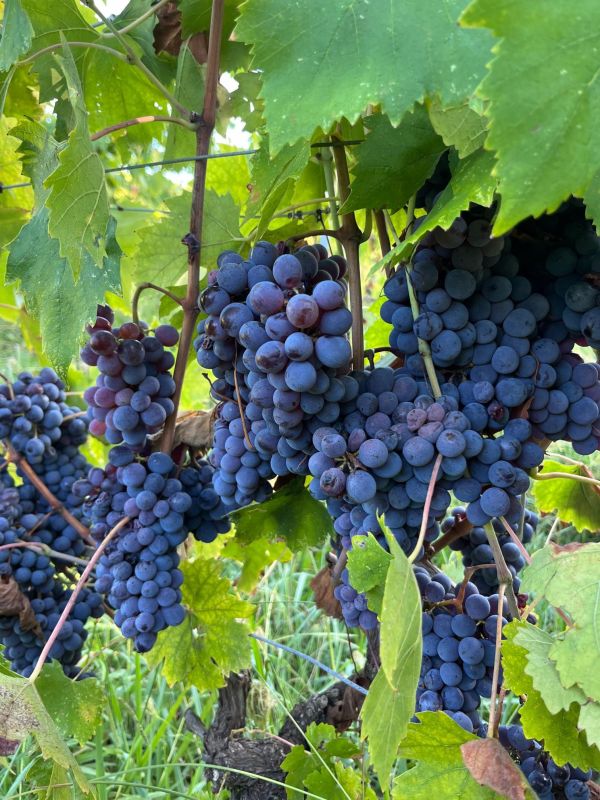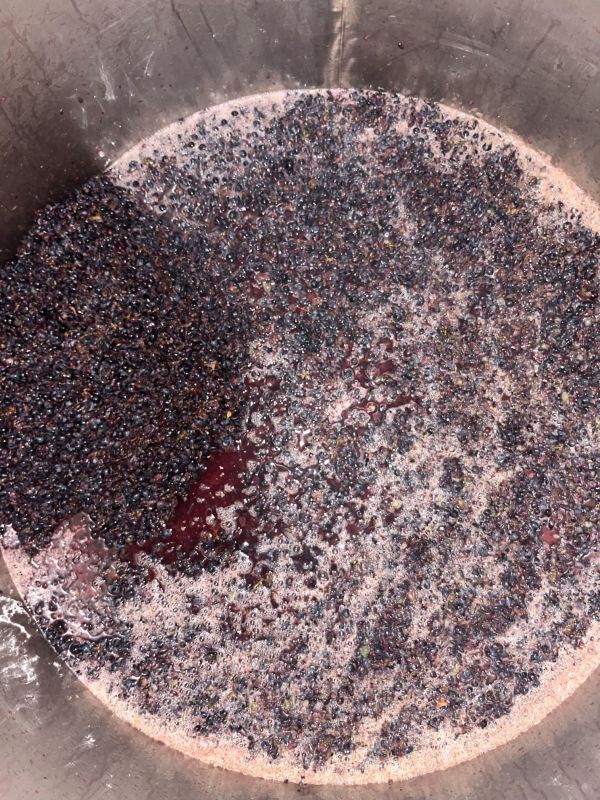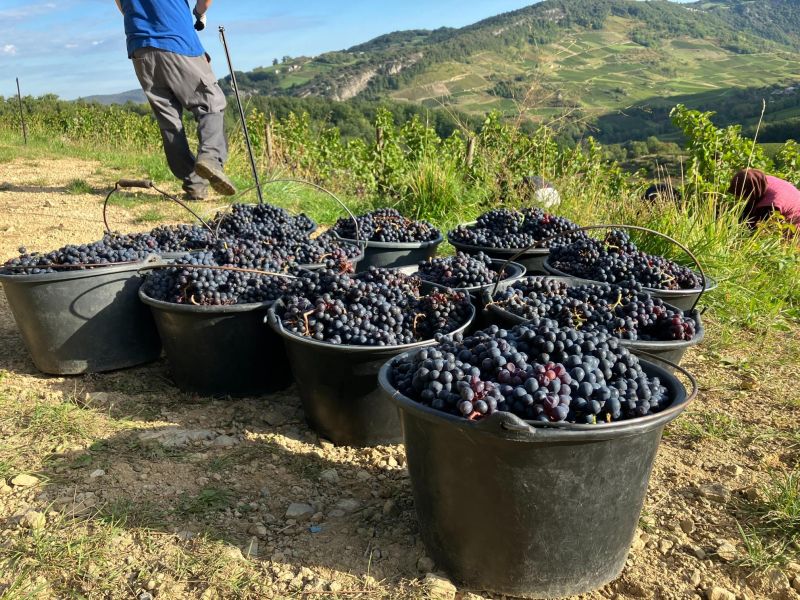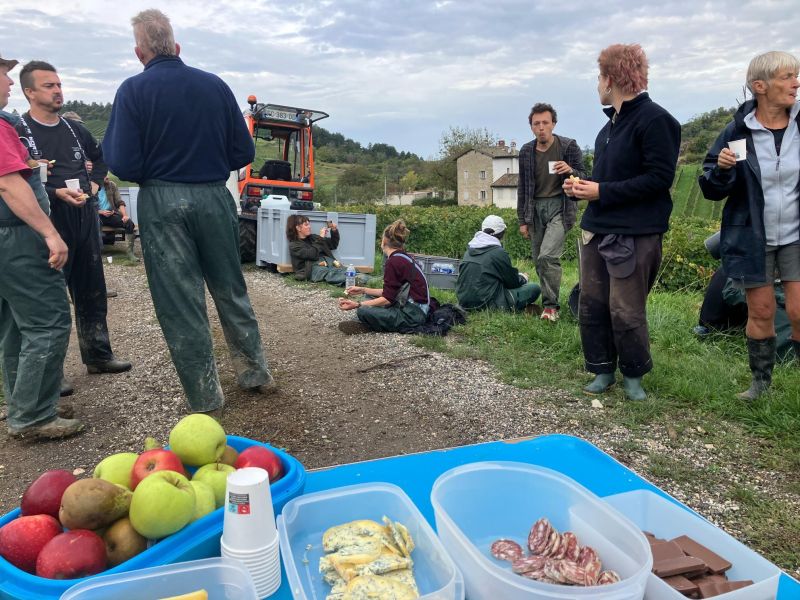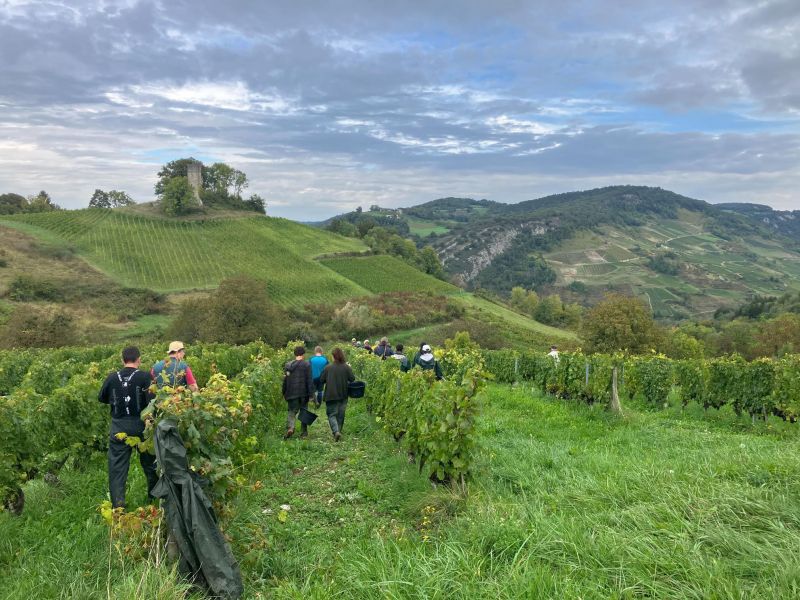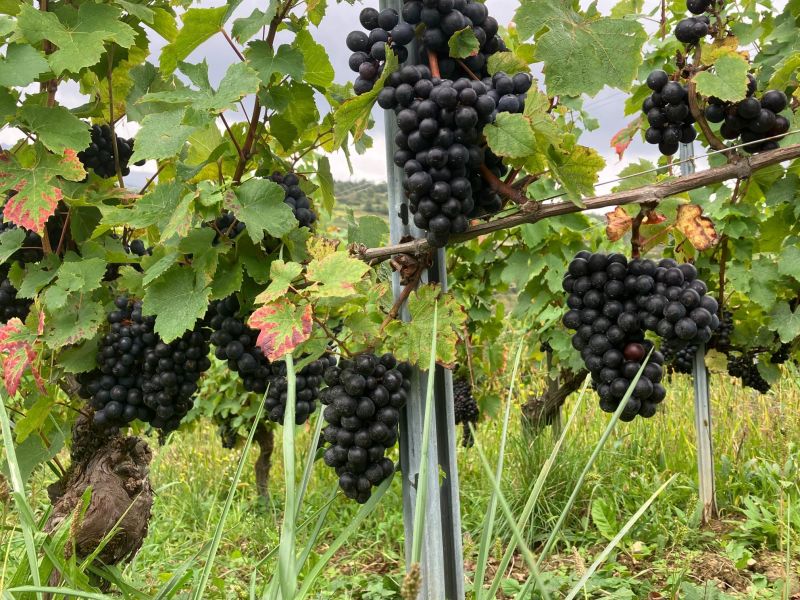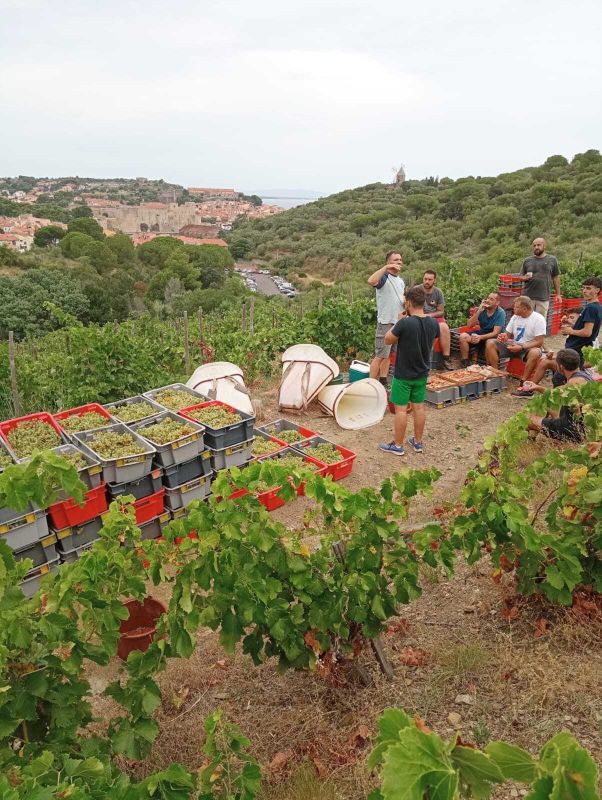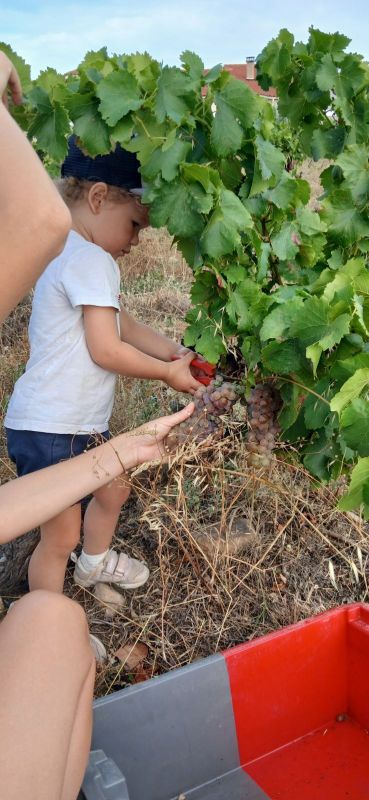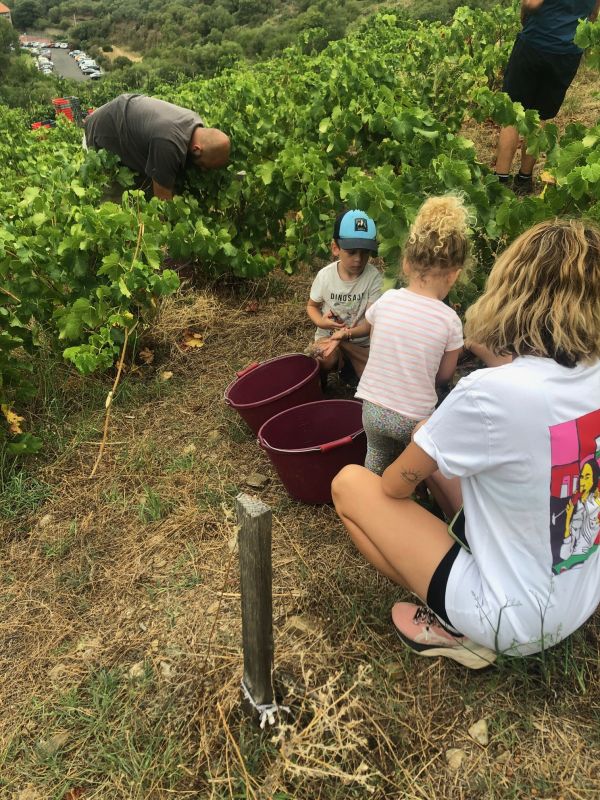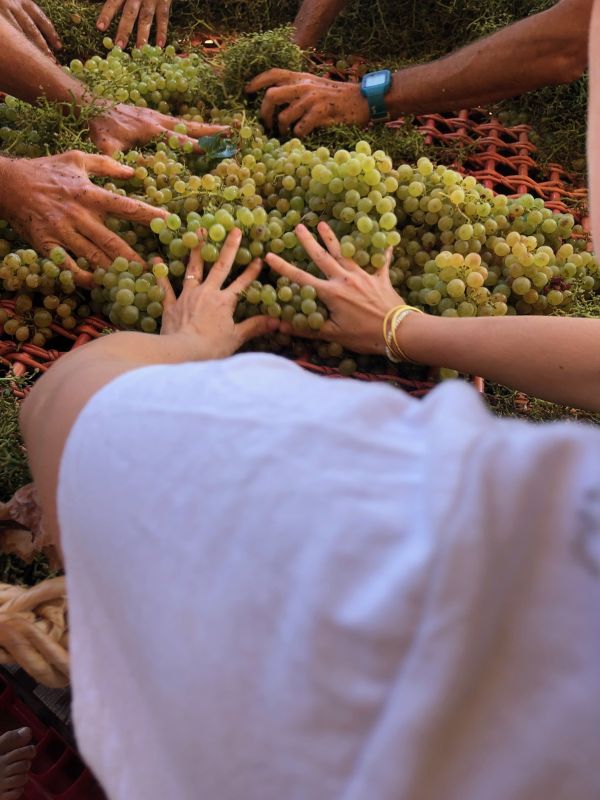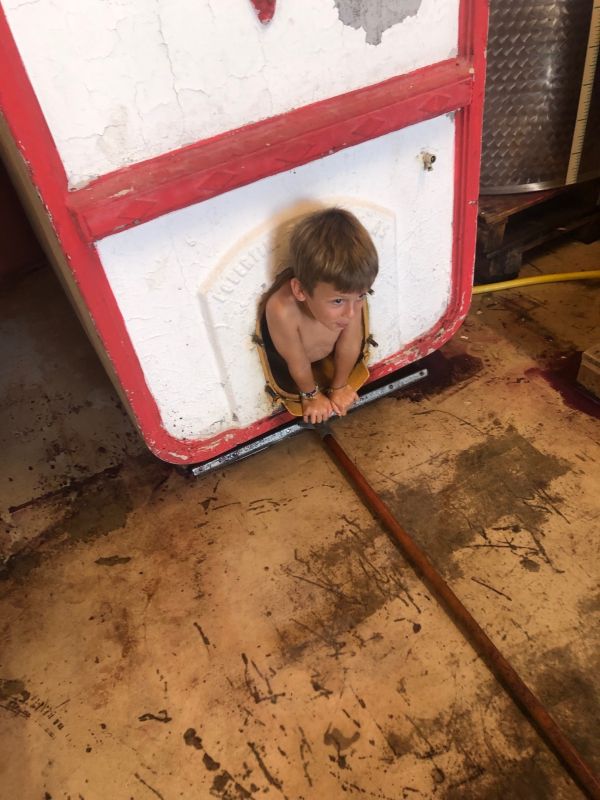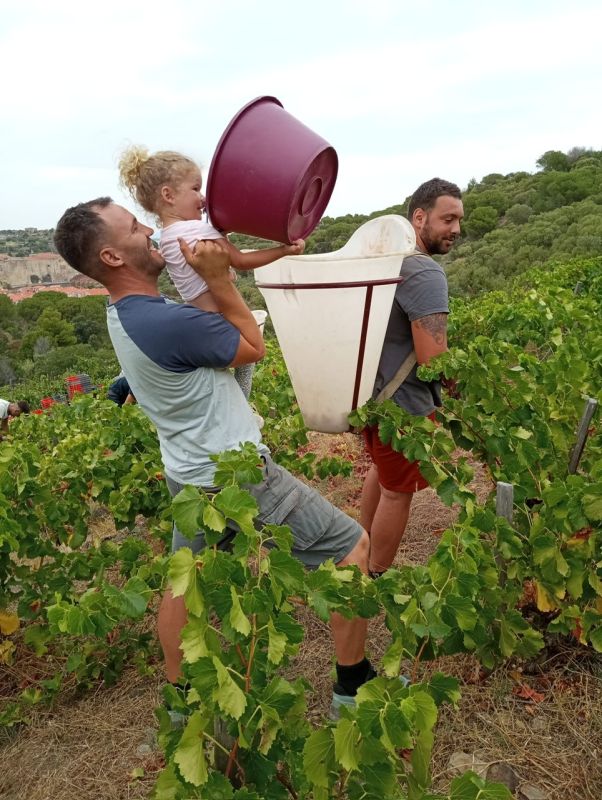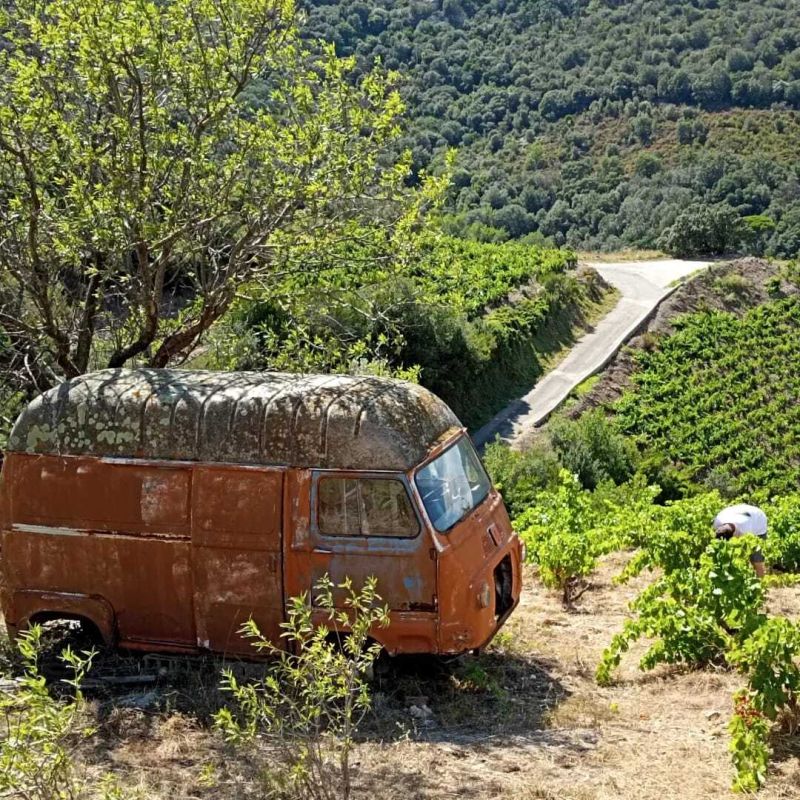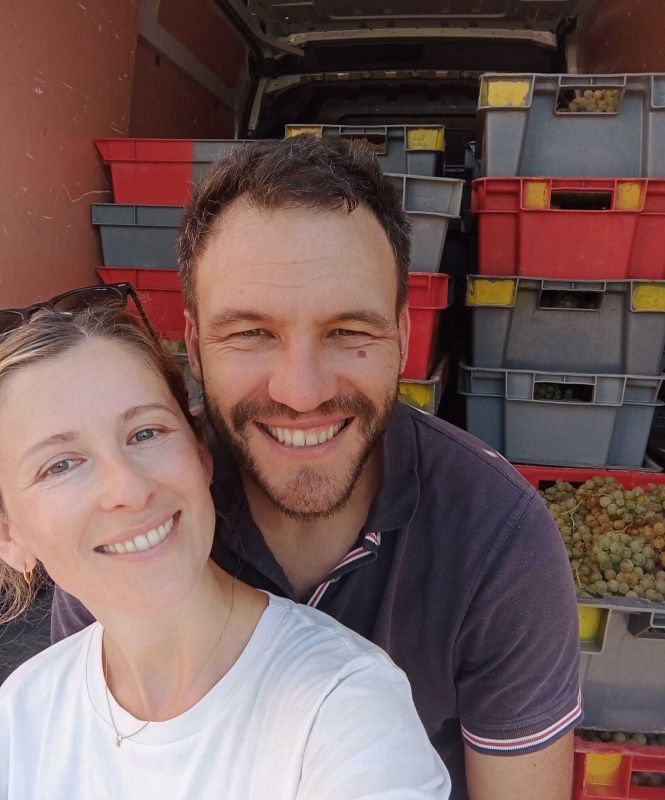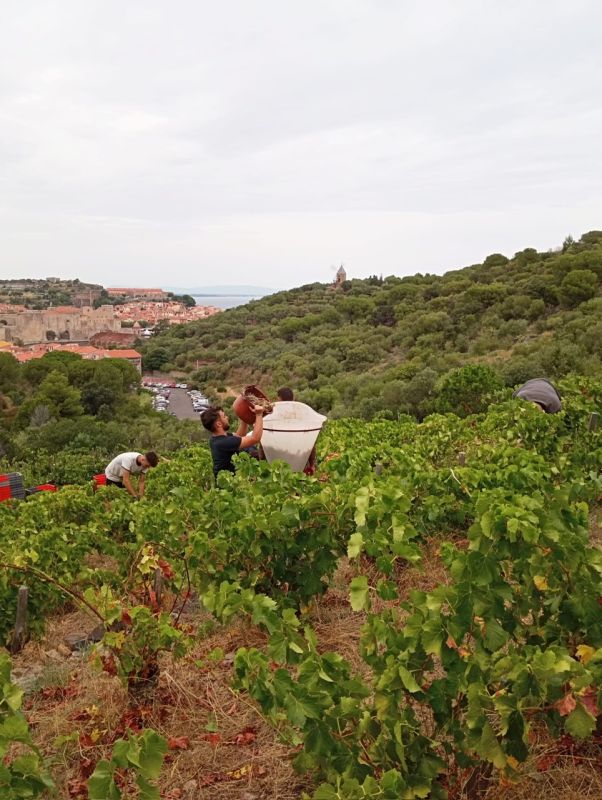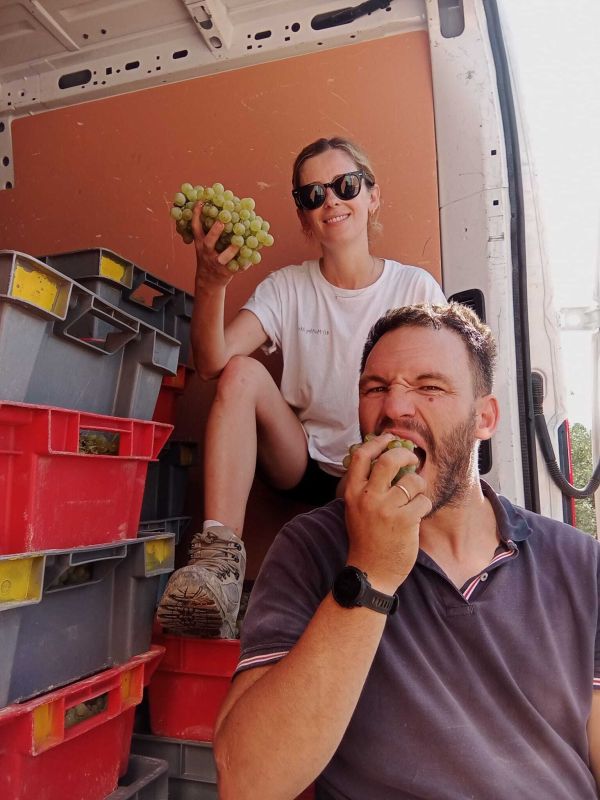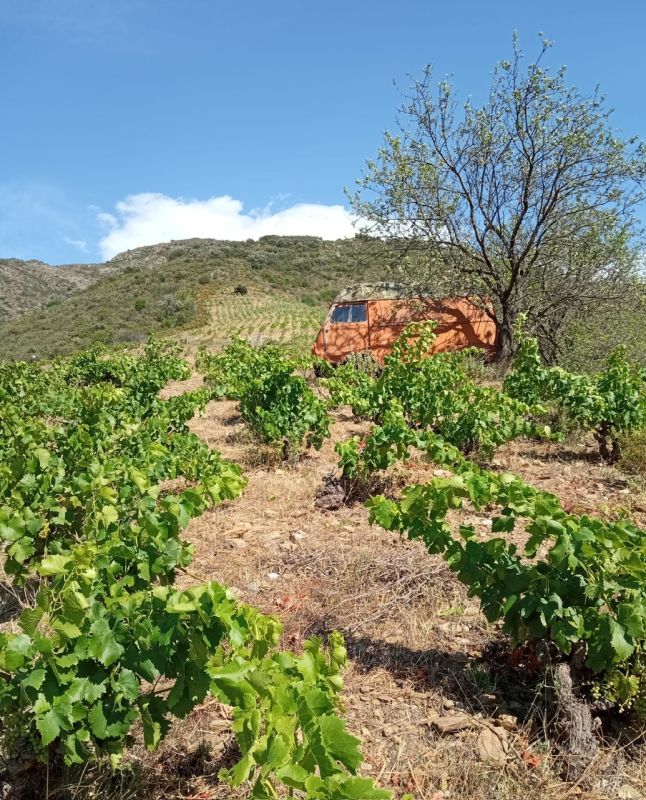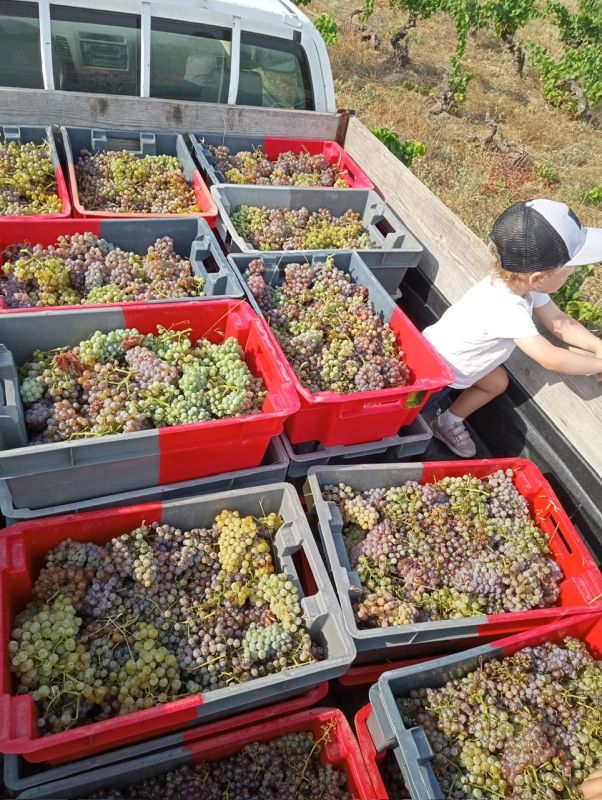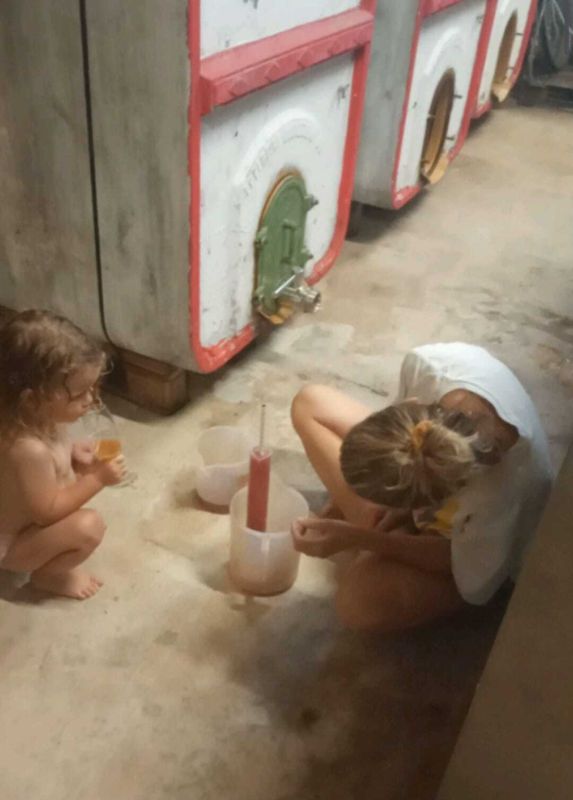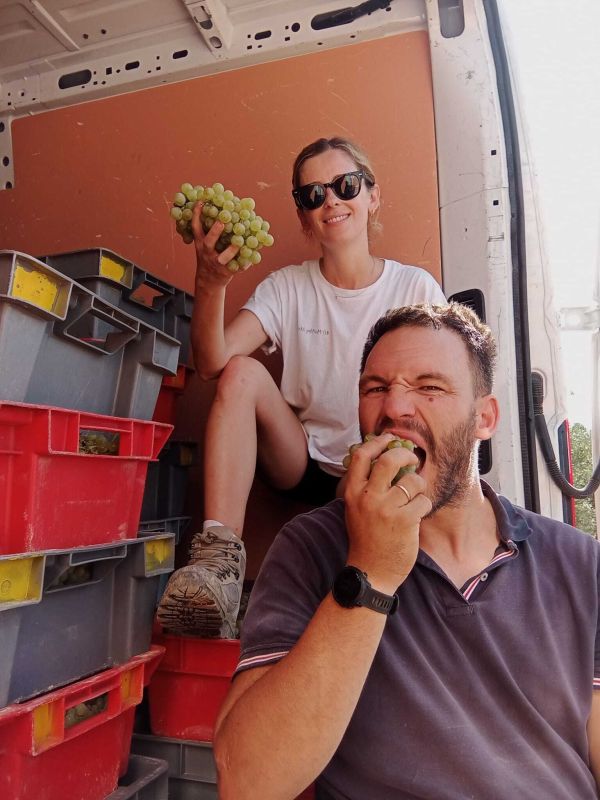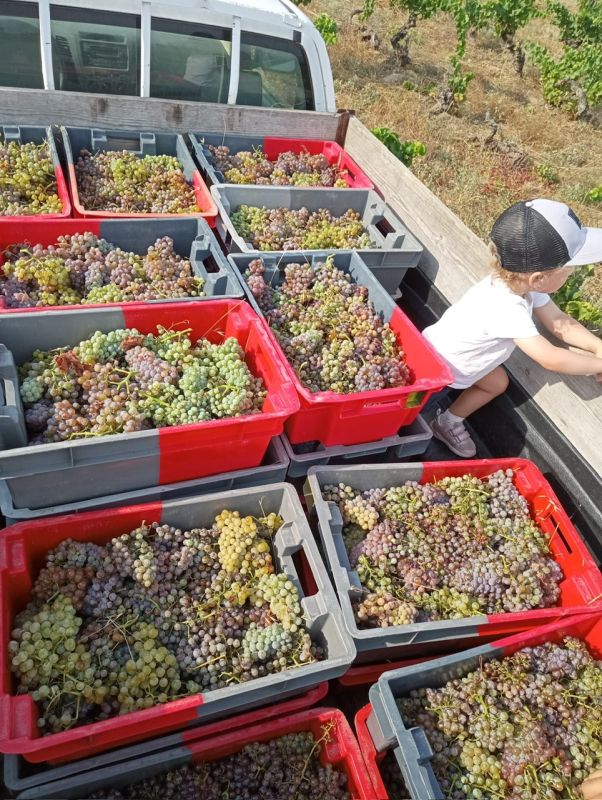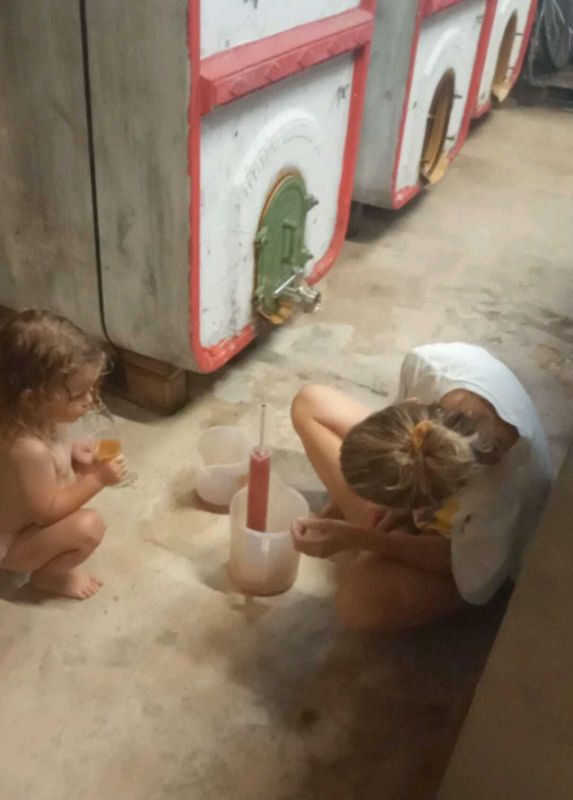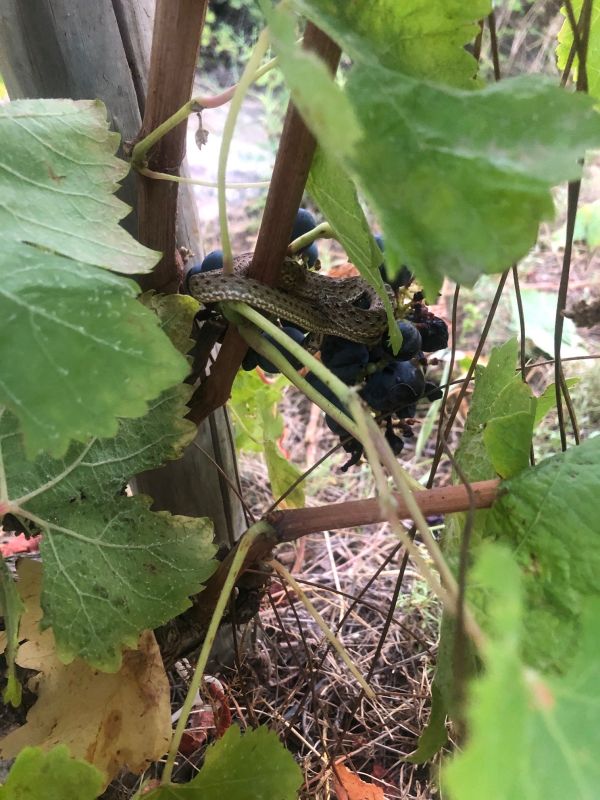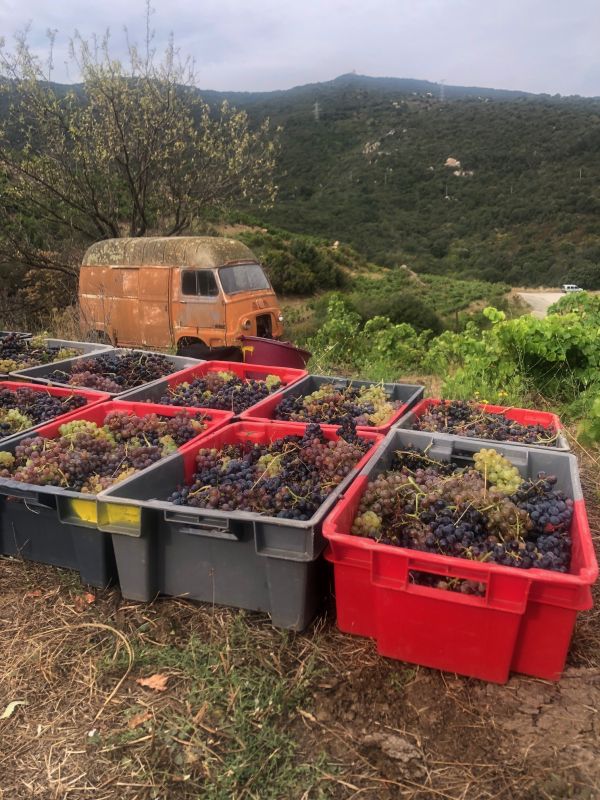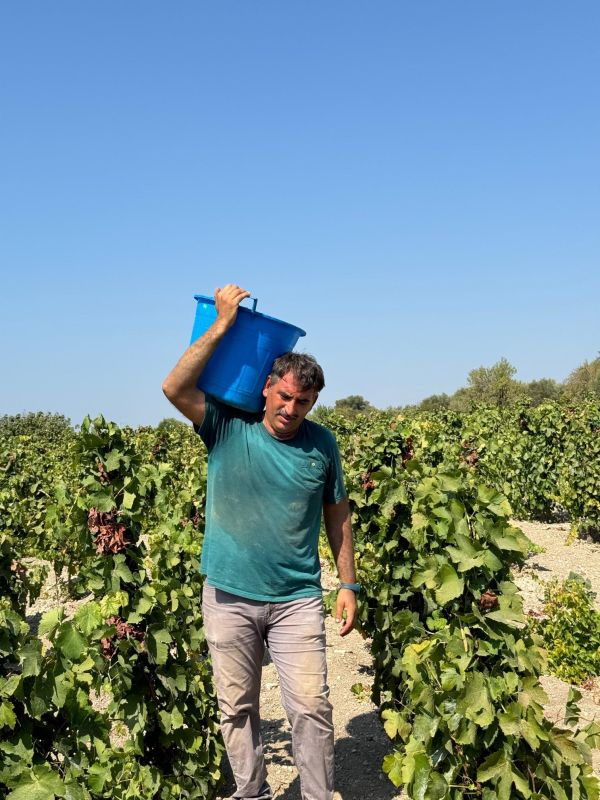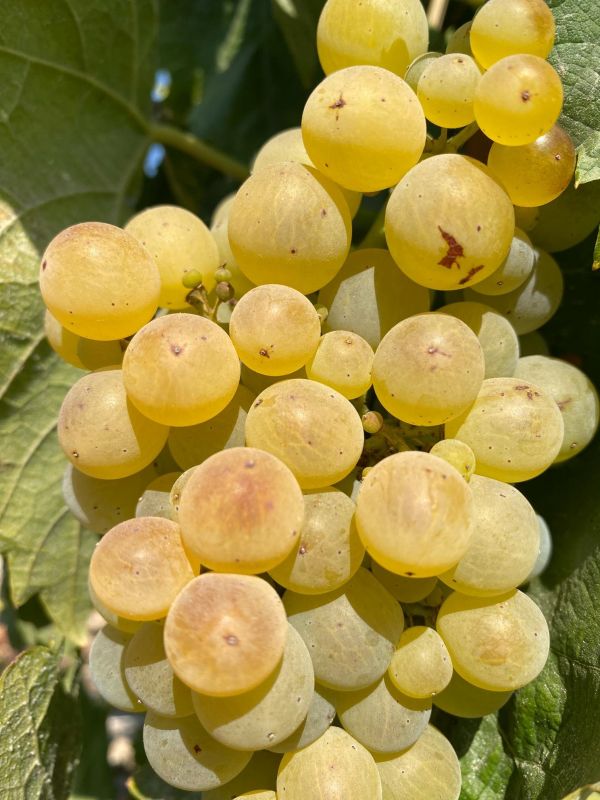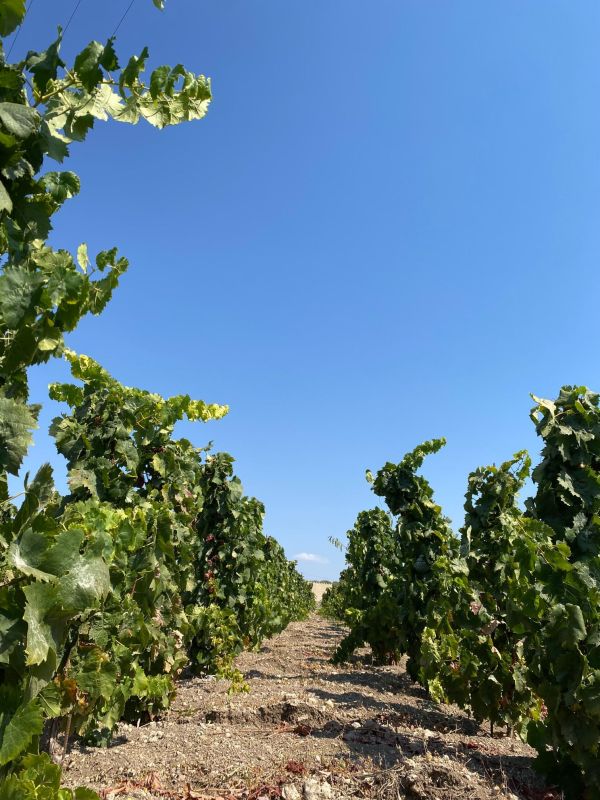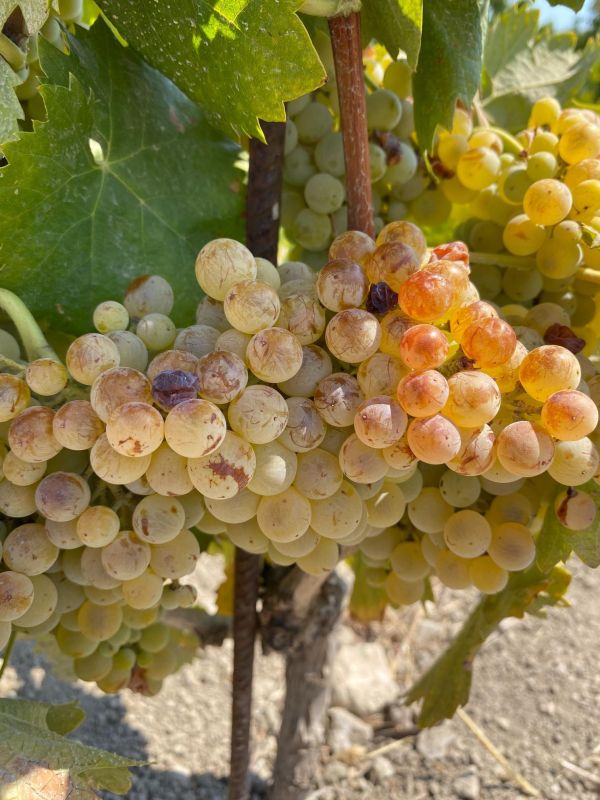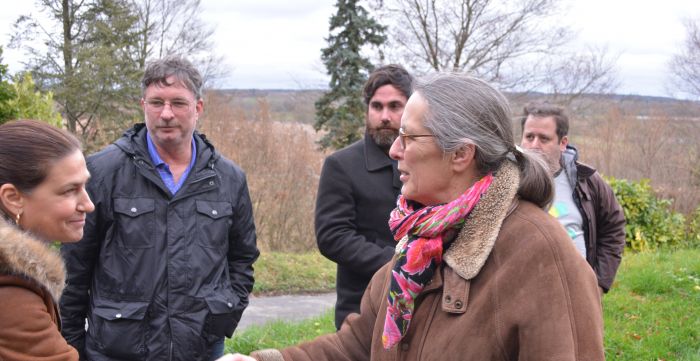August 31st, 2003:
I’m afraid that there won’t be a lot of harvest reports this year because the crop has been so reduced that the harvest will not last very long.
We started the harvest on August 27th - an extraordinary date for the region (we’re used to starting around September 20th…even later in some years). But this is an exceptional year for all of France’s wine regions.
In the Touraine, there were freezing temperatures on April 10th which caused serious damage to parts of the region (ours was very badly hit) followed by a promising spring and early summer: just the perfect amount of sun and rain. But, as it turns out, Mother Nature is capricious and in August (at the same time that the weather in New York was not so great) we had a heat wave with temperatures over 40 C that lasted for 11 straight days. Certain grape varieties burned, in particular the Gamays, the Côts (enormous losses) and the Sauvignon Blancs (a little less damage). The later varietals like Cabernet Franc, Chenin Blanc (which we don’t have any more) and Pineau d’Aunis were spared or rather they resisted the sun’s rays better.
So, we started the harvest on August 27th under a blazing sun (it was hard for the pickers…Didier was in the cellar : he didn’t suffer too much!)
The morning: Chardonnay 13.5% potential alcohol, 4 grams/liter acidity, yield – 20hl/ha
The afternoon: Gamay 13.5% potential alcohol, 4 grams/liter acidity, yield – 20hl/ha
August 28th, the rain came…actually a few showers which were rather refreshing for the harvesters.
The morning: Gamay – 13.5% potential alcohol, 5 grams/liter acidity, yield 20hl/ha
The afternoon: Sauvignon Blanc – 13.5% potential alcohol, 4 grams/liter acidity, yield 23hl/ha.
August 29 : the rain of the previous night seriously cooled things down. I had to switch from shorts and sandals to long pants and boots. By the afternoon, I was able to put my shorts and sandals on again (whew!)
All day: Sauvignon Blanc – 13% potential alcohol, 4 grams/liter acidity and the same appalling yields.
We had the pleasure of admiring a deer – another reason our yields are so feeble (after having eaten the buds in the spring, they are now eating the fully ripened grapes!)
Today, Sunday, the weather has stabilised. It rained 8 mm last night…not quite enough to swell the grapes! More to come in our next installment.
September 8th, 2003:
This week we only harvested on Monday and Friday, so I had plenty of time to search for rocks for my collection. (Translator’s note: According to an article that appeared on a French Wine Webzine, rock collecting is Catherine’s sole function at Clos Roche Blanche).
The beautiful weather continues.
Friday night, a storm unloaded 19mm of water and then on Saturday, a few showers came maintaining the previous night’s watering.
Sunday afternoon, the sun came out. In short, ideal conditions for porcini mushrooms….I’m going crazy with impatience!
As Didier says, I am stuck in the hunter/gatherer stage of evolution (without the hunting part), indeed a particular subspecies known as “homo ça pionce, ça pionce” (Translator’s note: pronounced homo sa-pi-onse – meaning “man that sleeps and sleeps”)
Getting back to the sheep…or rather the grapes….
Monday: Gamay (bought from some neighboring winemakers)
Between 12% and 13% potential alcohol
5 – 5.5 grams/liter acidity
yields: between 20 and 40 hl/ha
Friday: Pineau d’Aunis (at our place)
12.5 % potential alcohol
3.5 grams/liter acidity
yields: 23 hl/ha
(we won’t be able to make any red Pineau d’Aunis this year)
We are waiting until Thursday to harvest the last plot of Sauvignon Blanc (the latest ripening, the one which we were able to save from the frost in April when the homo ça pionce, ça pionce had to get up very early two days in a row!)
Finally, on September 15 (Tax Day), we will finish up with the Côt.
October 1st, 2003:
Late again.
We harvested the Cabernet Franc on September 22nd and 23rd (we had to stop on the 22nd because of the rain) : 12.2% potential alcohol, 4 grams/liter acidity.
On September 27th we harvested the Cabernet Sauvignon with some friends:
- 11.5% potential alcohol (the lowest of the season)
- 4 grams/liter acidity
- yields at around 40hl/ha (what a dream!)
Didier is losing sleep worrying about the fermentations.
We tasted the 2003 Gamay (one of the vats has finished fermenting): superb!
Last week, I took a couple of days off to go pick cèpes (porcini mushrooms), shhh, I shouldn’t say anything because even in Sologne there aren’t any.
I have found so many that I’m giving them away to friends…too bad you’re not here in France.
October 27th, 2003:
I’ve lost track of where I am with these harvest reports. Did I tell you that we picked the Gamay “verdillons” on October 11th with some friends?(*) We harvested 7.5 hectoliters at 12% potential alcohol and 5.5 grams acidity. It was the first (and maybe the last) time that we have “alboté”, a local term which means to glean in the vines. (**)
Most of the fermentations are finished. The test results are reassuring: weak volatiles and decent acidity. In short, Didier is relieved and clearly more relaxed: he’s sleeping better now.
As far as mushrooms go, there aren’t any more cèpes (or very few) but the pieds de mouton have taken over. It’s really been a beautiful autumn in spite of an early cold snap. We’ve had frost in the morning for the past three days.
(*Translator’s Note: “verdillons” are the small bunches that grow later in the season - high up on the fruit-bearing cane. Since they blossom way after the lower “real” grapes, they usually do not attain ripeness and are left on the vines or they are picked unripe to make “verjus” or green juice, an ingredient used by serious cooks.)
(**”alboter”, in the local dialect of the Touraine region, describes the picking, or gleaning, of the grapes that had been left on the vines during the harvest proper.)
